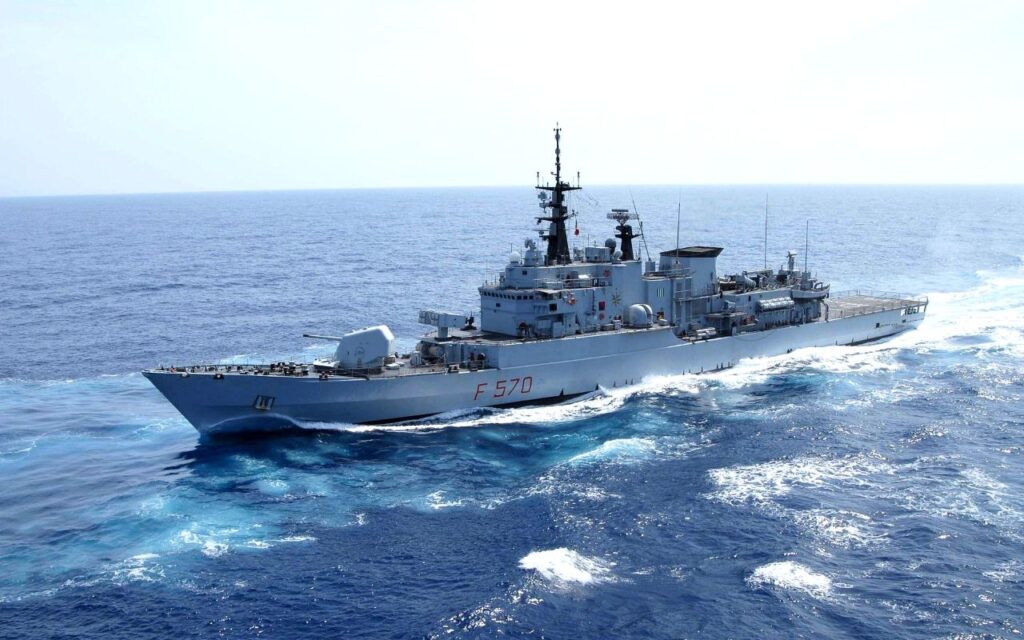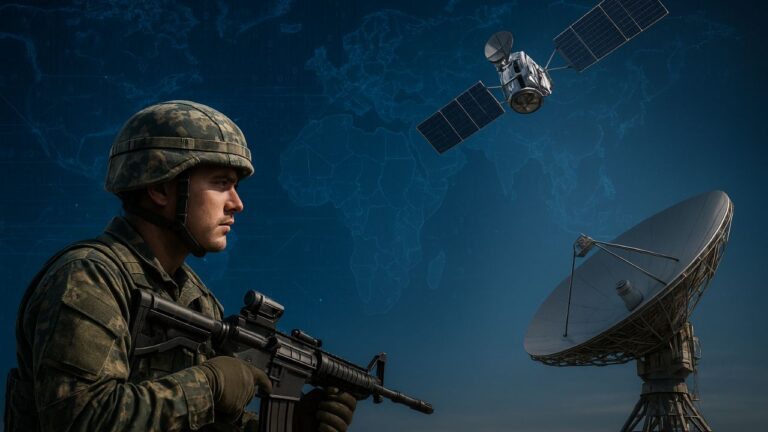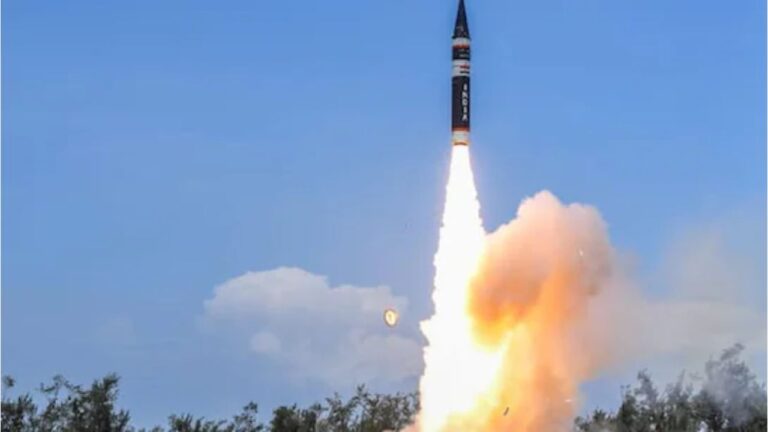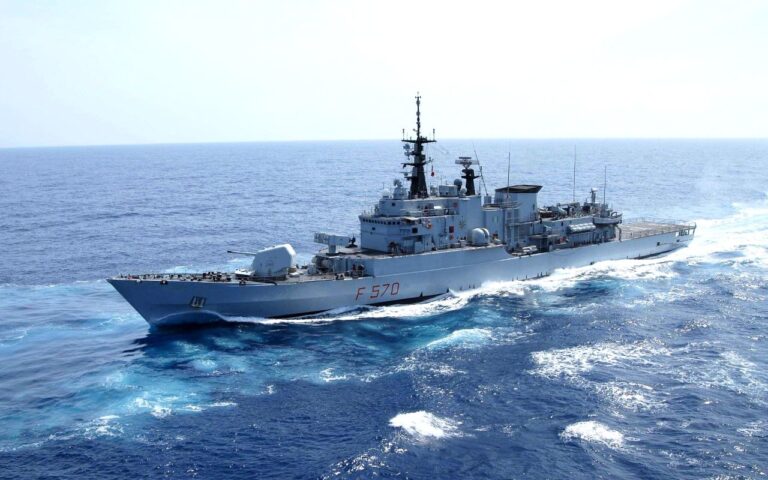
India’s maritime environment is increasingly central to its strategic thinking. The Indo-Pacific has become a theatre of immense geopolitical importance — sea lines of communication (SLOCs), energy routes, regional influence, and growing naval competition all converge here. For India, which sits at the core of the Indian Ocean Region (IOR), the Indian Navy’s transformation into a credible blue-water force is no longer an option but a strategic necessity.
Over the next decade, New Delhi aims to enhance fleet strength, build indigenous shipbuilding capacity, and strengthen power projection to protect its maritime interests in the Indo-Pacific.
What Does Blue-Water Status Mean for India
A blue-water navy is one that can operate globally, far from home bases, sustain prolonged deployments, and protect its SLOCs, territorial waters, as well as project power (naval presence, deterrence, diplomacy) well beyond its immediate coastline. For India, this includes:
- Sea control and presence in the Indian Ocean, parts of the South East Asian seas, and perhaps into the Pacific.
- Strong submarine capability, including conventional (SSK) and nuclear roles (SSBN / SSN), to ensure sea denial and second-strike capability.
- Carrier battle groups and supporting aviation (helicopters, fixed-wing aircraft, UAVs) for power projection and deterrence.
- A fleet large enough to handle both high-intensity conflict and non-traditional missions (anti-piracy, HADR, maritime surveillance etc.), with high endurance, replenishment capacity, logistic support etc.
- Indigenous shipyards, supporting infrastructure, and supporting technologies (propulsion, sensors, weapons) so that large maintenance cycles and imports do not bottleneck readiness.
Indian Navy: Key Developments & Platforms
India has already made several concrete moves in build-out of its blue-water ambition:
- Fleet Size Expansion
- India currently operates around 140 warships (destroyers, frigates, corvettes, etc.), a number of diesel-electric submarines, and two Nuclear-powered Ballistic Missile Submarines (SSBNs).
- Plans are underway to expand to 200+ warships and submarines by 2035, possibly reaching ~230 by 2037.
- Aircraft Carriers & Carrier Air Wing
- India has commissioned INS Vikrant, the first indigenous aircraft carrier. INS Vikramaditya (originally Russian) continues in service. These carriers are central to force projection in blue water zones.
- To support carrier operations, India has placed orders for naval fighters: a recent deal with France for Rafale marine fighters; in parallel, the indigenous Twin Engine Deck Based Fighter (TEDBF) is under development.
- Submarine & Underwater Capability
- The Scorpène-class (Kalvari class) conventional submarines are being inducted. INS Vagsheer (one of them) was recently launched/launched/completed (depending on the stage).
- Project 75(I), which targets acquisition of advanced Indian diesel-electric (with possibly Air Independent Propulsion) submarines, is a priority.
- The SSBN fleet (Arihant class, etc.), and plans for continuous at-sea deterrence, are part of the strategic undersea posture.
- Surface Combatants & Stealth Frigates / Destroyers
- New classes such as Project 15B destroyers (e.g., INS Visakhapatnam, INS Surat etc.) provide modern surface strike and multi-role capability.
- The Project 17A stealth frigates, NextGeneration Destroyers (Project 18 / NGD), and other stealth surface vessels are under construction or approval. These bring improved sensors, stealth, automation, better weapons.
- Naval Bases, Logistics, & Maritime Domain Awareness
- Base infrastructure: INS Kadamba at Karwar (Project Seabird) is being expanded. It will be among the largest naval bases by capacity (warships, support etc.) in the Eastern Hemisphere.
- Increasing focus on surveillance, maritime patrol aircraft, UAVs, etc., to ensure wide-area domain awareness. Assets like P-8I, AWACS, UAVs etc. (some inherited, some being procured / upgraded). The ability to maintain presence depends not just on the ships but on shore-based sensors, networks, communication.
- Strategic & Diplomatic Aspects
- India is more active in alliances / naval exercises: Quad, Malabar, joint patrols, coordinated presence in IOR.
- India also emphasizes “net security provider” posture in IOR: anti-piracy, response to non-traditional threats, search-and-rescue, providing logistic support to partners.
Challenges and Gaps
India’s ambitions are large, but several constraints and gaps need addressing to fully realize blue-water capability:
- Fleet Renewal and Aging Platforms
Many older vessels, submarines (diesel and otherwise), and auxiliary/support ships are nearing end of service. Replacing or refitting them fast enough is a challenge. Delays are common in shipbuilding and inshore facilities. - Submarine Deficit
Although Scorpène boats are coming, current numbers are low, and there is a gap in attack submarine (SSN) capability, which is critical for undersea warfare threats and sustained deterrence. The indigenous SSN program is still in early stages. - Logistics, Sustained Presence and Support Ships
Maintaining long deployments requires fleet tankers, replenishment ships, repair yards, forward basing. India is building some fleet support ships and large dockyards, but sustaining presence in far seas will require robust logistics. - Technology Gaps
Advanced sensors, long-range missiles (anti-ship, land-attack), unmanned systems (surface, undersea, aerial), integrated command & control, electronic warfare, and cyber security are areas needing further investment. Also, indigenous content in propulsion, advanced electronics, etc., still lags in many platforms. - Budget & Acquisition Processes
The defence budget has to accommodate many services (not just Navy), pensions, operations & maintenance. Delays in procurement approvals, in shipyard capacities, in trials, etc., often slow down induction. Also trade-offs often have to be made between capability, speed, cost. - Geopolitical and Strategic Pressures
China’s naval modernization, overseas bases (e.g., in Djibouti, Gwadar, Ream etc.), undersea cable espionage, maritime militia, influence in littoral states etc., pose asymmetric and diplomatic challenges. India must not only build capability but also use it diplomatically, ensure secure maritime partnerships, alliances etc.
Roadmap Forward (Recommendations)
To strengthen its blue-water posture, India may focus on the following:
- Accelerate Submarine & SSN Development: Fast track SSN and Project 75(I) submarines, and invest in undersea unmanned systems to augment traditional sub fleets.
- Enhance Indigenous Build & Capacity: More shipyards with higher throughput, better quality, reduced delays; improve indigenous content in sensors, propulsion and weapons; “Make in India” focus in naval aviation and unmanned systems.
- Increase Support/Versatile Ships & Fleet Tankers: Getting more fleet replenishment ships, amphibious transport docks, logistics support, forward repair and maintenance bases.
- Focus on Unmanned & Surveillance Systems: Maritime domain awareness (MDA) through UAVs, USVs, drones, satellite imagery etc. Faster identification of threats (smuggling, infiltration, piracy).
- Integrated Doctrine & Jointness: Closer coordination with Army and Air Force especially for amphibious operations, air-sea battle, reconnaissance. Developing strong blue-water operational doctrine. Strengthening theatre commands that integrate naval power with air and land in extended coastal / littoral operations.
- Strategic Partnerships & Diplomacy: Deepen cooperation with like-minded navies (Quad, France, Japan, Australia), engage in joint exercises, extend port access / logistic agreements with friendly states along SLOCs, use naval diplomacy to strengthen influence among littoral states.
- Budget Stability & Efficient Procurement: Streamline procurement processes, reduce delays, improve shipyard modernization, ensure funds are allocated consistently for naval capital expenditure. Ensure delayed ships get priority to maintain capability.
Geostrategic Implications for the Indo-Pacific
India’s blue-water capability has implications beyond direct naval power:
- Maintaining open, secure trade routes in the Indian Ocean and into the Pacific which are vital for energy, trade, and supply chains.
- Countering Chinese naval expansion and presence in key chokepoints (Strait of Malacca, the Indian Ocean base access) through credible deterrence.
- Promoting the rules-based order on the seas, freedom of navigation, maritime domain awareness, suppressing non-traditional threats like piracy, maritime terrorism, illegal fishing.
- Enabling India to act as a stabilizer, first responder (HADR, NEO) in crises in its “extended area of interest”, thus projecting soft power as well as hard.
Conclusion
India’s journey toward realizing its blue-water navy ambitions is advancing. With the induction of carriers, expansion of submarines, stealth frigates, and modernization of shipyards and logistics, the Navy is slowly but steadily closing the gap. However, to truly secure the Indo-Pacific in a sustainable manner, India must navigate through the challenges of fleet renewal, technological gaps, procurement delays, and logistic sustainment.
If New Delhi succeeds in combining capability with strategy, diplomacy, and industrial self-reliance, the Indian Navy will emerge as a global maritime force—one not just capable of defending the homeland, but shaping the security order of the Indo-Pacific.






